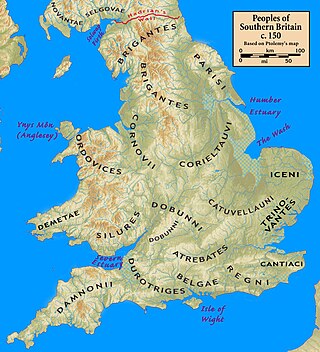
Claudius Ptolemy was an Alexandrian mathematician, astronomer, astrologer, geographer, and music theorist, who wrote about a dozen scientific treatises, three of which were of importance to later Byzantine, Islamic, and Western European science. The first is the astronomical treatise now known as the Almagest, although it was originally entitled the Mathēmatikē Syntaxis or Mathematical Treatise, and later known as The Greatest Treatise. The second is the Geography, which is a thorough discussion on maps and the geographic knowledge of the Greco-Roman world. The third is the astrological treatise in which he attempted to adapt horoscopic astrology to the Aristotelian natural philosophy of his day. This is sometimes known as the Apotelesmatika but more commonly known as the Tetrábiblos, from the Koine Greek meaning "Four Books", or by its Latin equivalent Quadripartite.
Following is a list of rivers of classical antiquity stating the Latin name, the equivalent English name, and also, in some cases, Greek and local name. The scope is intended to include, at least, rivers named and known widely in the Roman empire. This includes some rivers beyond the bounds of the Roman empire at its peak.

Hibernia is the Classical Latin name for Ireland. The name Hibernia was taken from Greek geographical accounts. During his exploration of northwest Europe, Pytheas of Massalia called the island Iérnē. In his book Geographia, Claudius Ptolemaeus ("Ptolemy") called the island Iouerníā. The Roman historian Tacitus, in his book Agricola, uses the name Hibernia.

The Regni, Regini, or Regnenses were a tribe based largely on Sussex and which occupied modern West Sussex, East Sussex, south-west Kent, eastern Surrey, and the eastern edges of Hampshire. Their tribal centre was at Noviomagus Reginorum, close to Trisantona Fluvius which joined the English Channel at Littlehampton, a little way to the east of Noviomagus Reginorum. The tribe was bordered to the west by the Belgae, to the north by the Atrebates, and to the east by the Cantiaci, while much of their northern border was filled by the vast and near-impenetrable Weald Forest. Nevertheless, they were thinly scattered on either side of the Weald, and there were safe paths through the forest.
Eblana is an ancient Irish settlement that appears in the Geographia of Claudius Ptolemaeus (Ptolemy), the Greek astronomer and cartographer, around the year 140 AD. It was traditionally believed by scholars to refer to the same site as the modern city of Dublin. The 19th-century writer Louis Agassiz used Eblana as a Latin equivalent for Dublin. However, more recent scholarship favours the north County Dublin seaside village of Loughshinny due to its proximity to Drumanagh, an important trading site with links to Roman Britain; it has even been described as a bridgehead of a possible Roman invasion. However, there is no definitive proof to tie Eblana to any location, so its exact identity remains a matter of speculation.

The Brigantes were Ancient Britons who in pre-Roman times controlled the largest section of what would become Northern England. Their territory, often referred to as Brigantia, was centred in what was later known as Yorkshire. The Greek geographer Ptolemy named the Brigantes as a people in Ireland also, where they could be found around what is now Wexford, Kilkenny and Waterford, while another people named Brigantii is mentioned by Strabo as a sub-tribe of the Vindelici in the region of the Alps.
The Selgovae were a Celtic tribe of the late 2nd century AD who lived in what is now the Stewartry of Kirkcudbright and Dumfriesshire, on the southern coast of Scotland. They are mentioned briefly in Ptolemy's Geography, and there is no other historical record of them. Their cultural and ethnic affinity is commonly assumed to have been Brittonic.

Bremenium is an ancient Roman fort (castrum) located at Rochester, Northumberland, England. The fort is part of the defensive system built along the extension of Dere Street, a Roman road running from York to Corbridge and onwards to Melrose. Significantly the fort is a long way north of Hadrian's Wall. It was one of the last forts north of Hadrian's wall to remain occupied until the 270s.

The Nemetes E.g. Frederick Kohlrausch "History of Germany. From the Earliest Period to the Present Time". D.Appleton and Company, New York, 1880. were a tribe settled along the Upper Rhine by Ariovistus in the 1st century BC.

Singara was a strongly fortified post at the northern extremity of Mesopotamia, which for a while, as it appears from coins minted there, was occupied by the Romans as an advanced colony against the Persians. It was the camp of legio I Parthica.

Vespasiana was a fictional 4th-century Roman province in Caledonia that appeared in Charles Bertram's 18th-century forgery On the State of Britain, which purported to be "Richard of Westminster"'s 14th-century retelling of a Roman general's contemporary account of Britain in late antiquity.








